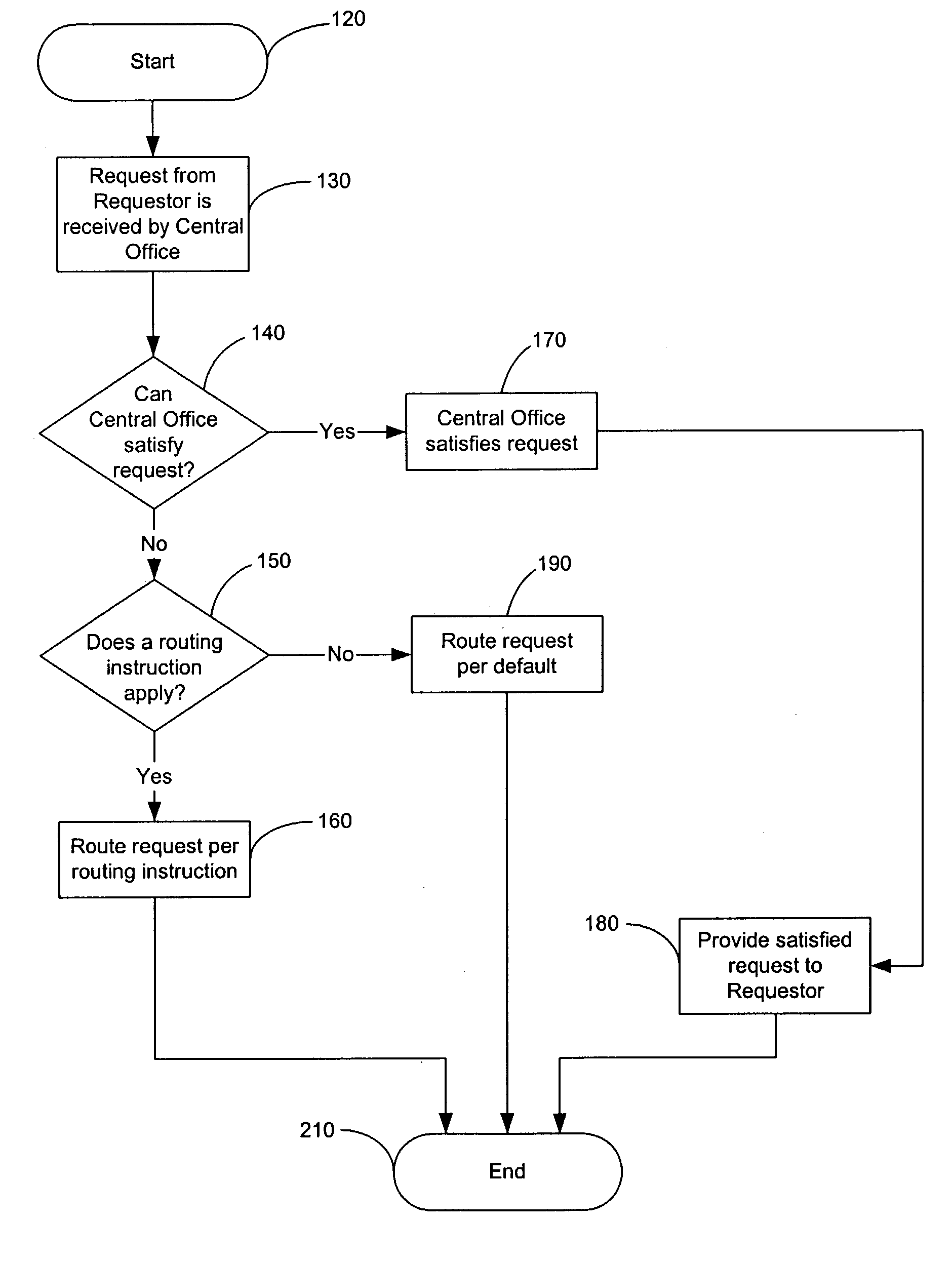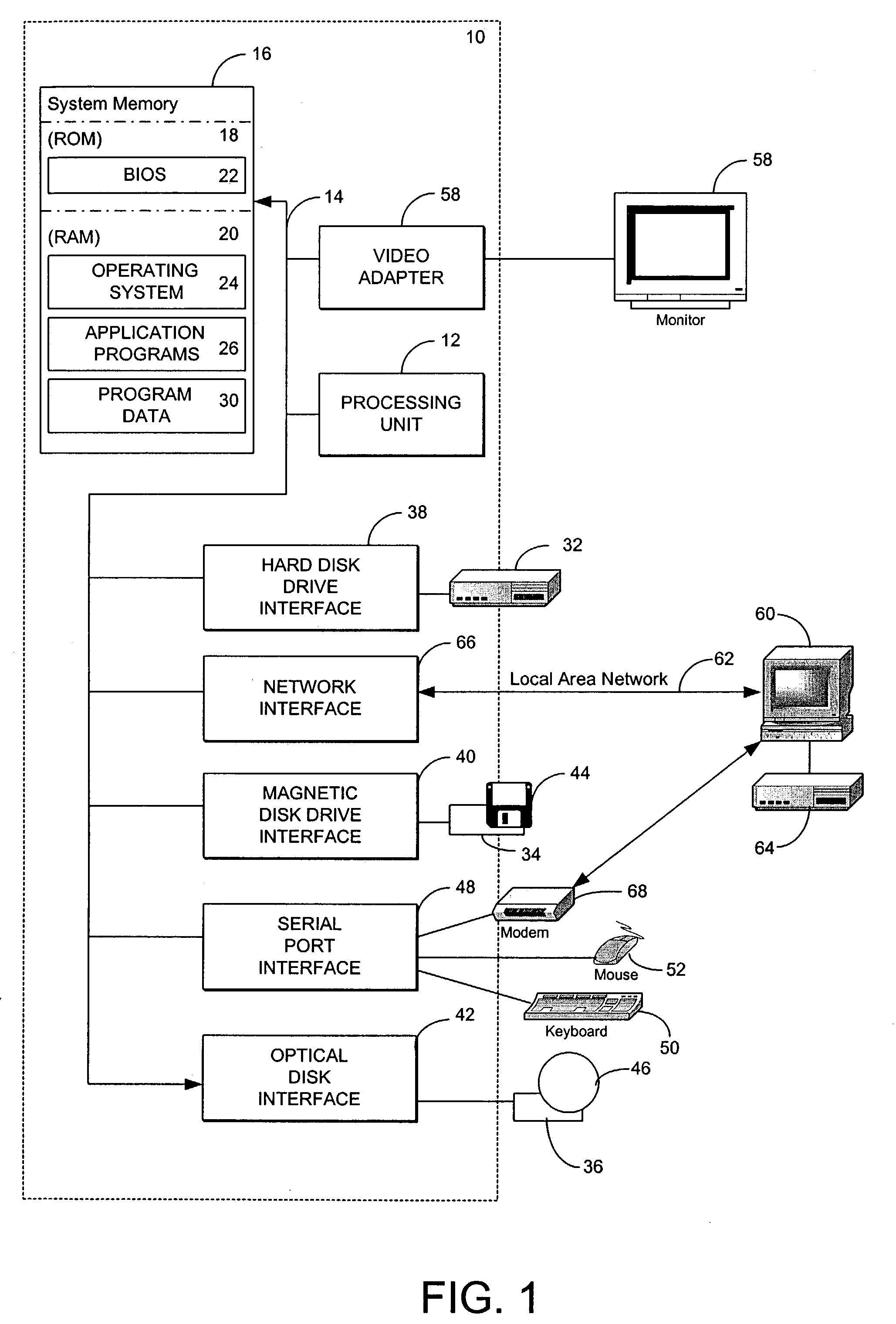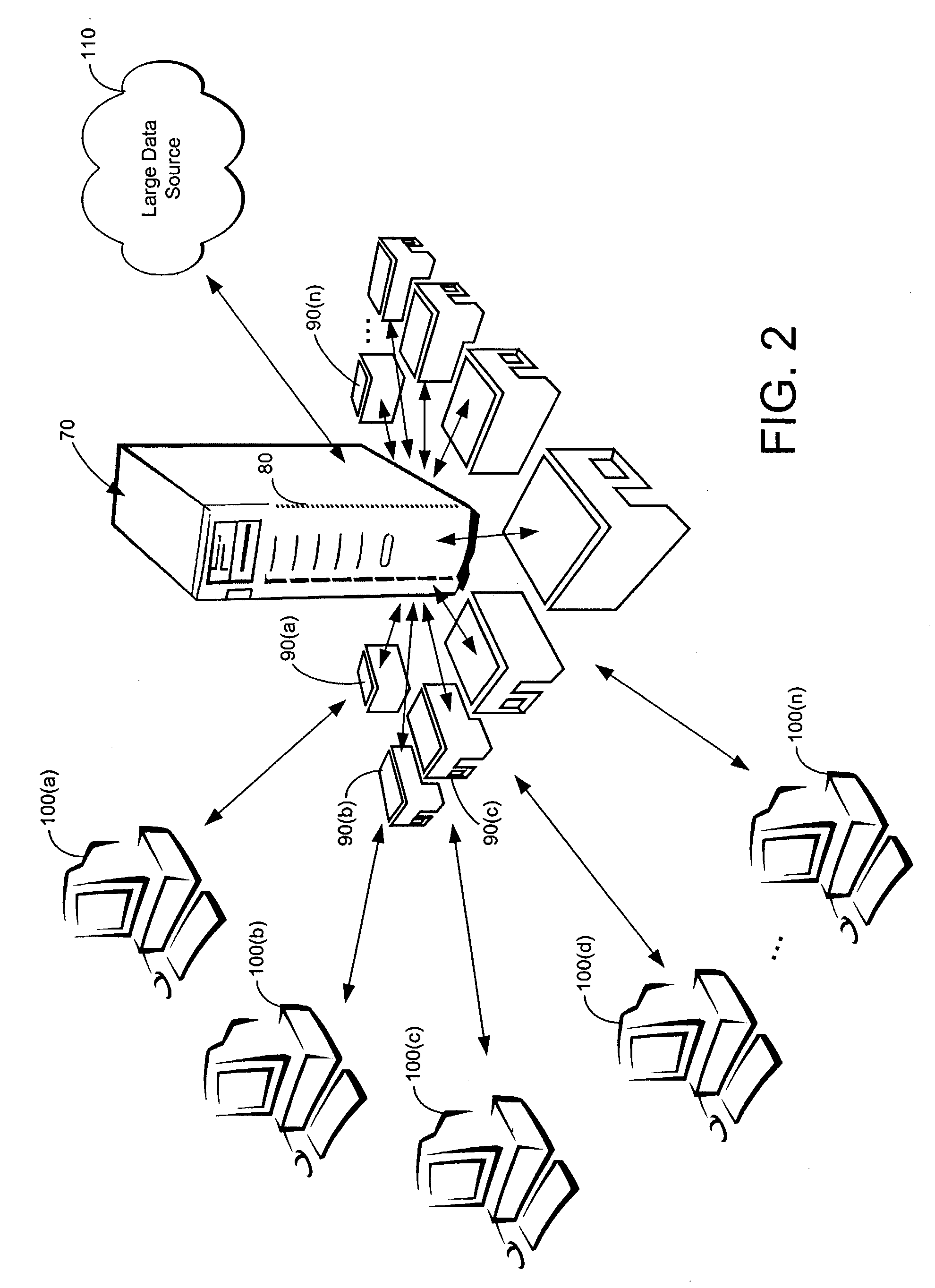Methods and systems for routing requests using edge network elements
a network element and routing request technology, applied in the field of routing within a network, can solve the problems of aggravating or frustrating internet users, increasing the volume of traffic on the network connected to the internet, and slowing down the speed associated, so as to minimize network traffic and speed up access
- Summary
- Abstract
- Description
- Claims
- Application Information
AI Technical Summary
Benefits of technology
Problems solved by technology
Method used
Image
Examples
Embodiment Construction
[0033] The methods and systems according to the present invention contemplate the interaction of a server and one or more clients within a client-server network. The “client-server” configuration of a client-server network may refer to a hardware configuration, to a software configuration, or to a combination thereof
[0034] Generally, a “client” in a hardware configuration is a computer, such as a personal computer (PC), intelligent device, or workstation. The client may perform tasks during which the client may request information or otherwise use the resources of another object, such as the server or another network element, to accomplish such tasks.
[0035] Generally, a “server” in a hardware configuration is a computer or other intelligent device. A server typically performs the bulk of centralized or generalized tasks in the network and may have more memory, processing speed, and storage than a client. Alternatively, the server may perform specialized tasks such as distributing ...
PUM
 Login to View More
Login to View More Abstract
Description
Claims
Application Information
 Login to View More
Login to View More - R&D
- Intellectual Property
- Life Sciences
- Materials
- Tech Scout
- Unparalleled Data Quality
- Higher Quality Content
- 60% Fewer Hallucinations
Browse by: Latest US Patents, China's latest patents, Technical Efficacy Thesaurus, Application Domain, Technology Topic, Popular Technical Reports.
© 2025 PatSnap. All rights reserved.Legal|Privacy policy|Modern Slavery Act Transparency Statement|Sitemap|About US| Contact US: help@patsnap.com



